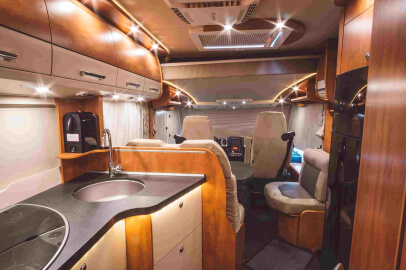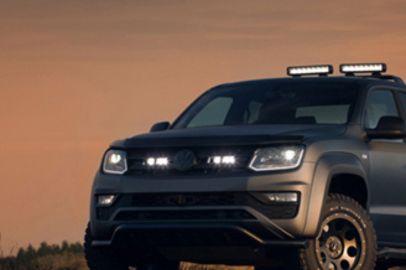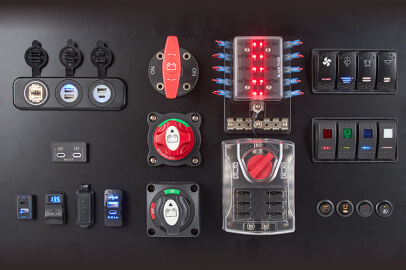Yacht and Boat Navigation Lights Rules: Types & Requirements
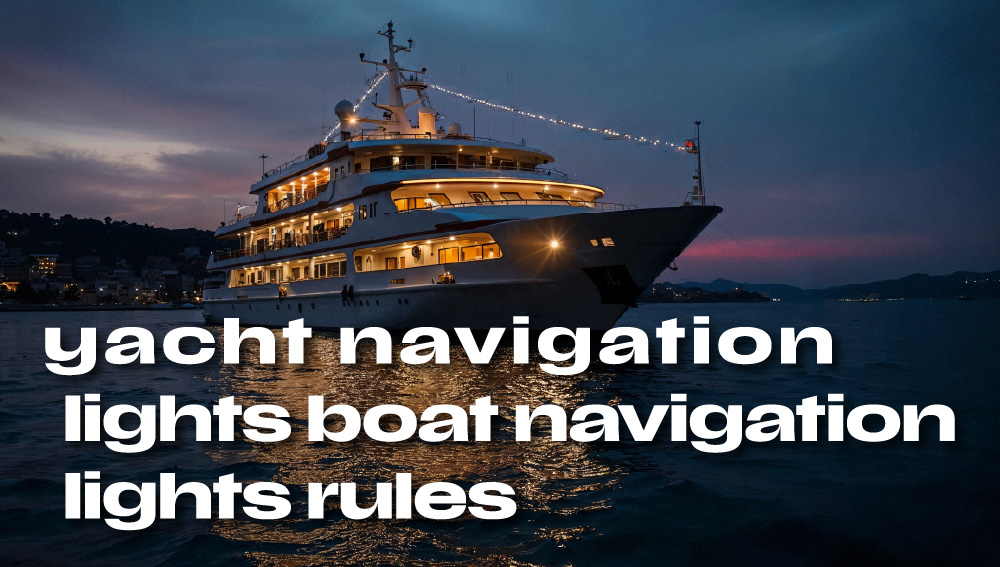

Why Navigation Lights Matter at Sea
Navigation lights are the first line of defense against collisions when sailing after sunset or in low-visibility conditions. Properly installed and maintained lights not only make your vessel clearly visible but also let others identify your vessel’s heading and status. Whether you skipper a private yacht or a small recreational boat, understanding the Yacht and Boat Navigation Lights Rules and how to install them correctly is vital for safe navigation and compliance with international maritime standards. This guide covers types of navigation lights, installation guidelines, visibility ranges, and common mistakes so your vessel stays visible and safe in any condition.
一、Understanding Navigation Lights: Basics and Importance
Navigation lights communicate a vessel’s position, movement and status to other watercraft. They are critical during night, fog or poor weather. Different vessel types—yachts, fishing boats, and sailboats under 12 meters—must display specific combinations of lights to indicate size, type and activity. These signals help nearby vessels decide whether to give way or change course.
The International Regulations for Preventing Collisions at Sea (COLREG) provide standardized light patterns that help mariners identify each other’s direction of travel. For example, a red light indicates the port (left) side, a green light indicates the starboard (right) side, and a white light signifies the stern or masthead position.
Key Point: Understanding basic navigation light rules helps prevent accidents and ensures smooth maritime traffic, especially in crowded harbors or along coastal routes.
二、Types of Yacht and Boat Navigation Lights
Navigation lights come in standardized types—each serving a distinct purpose:
Port (red) & Starboard (green) Lights:
- Indicate the vessel’s left and right sides.
Example: C2-520-SSR (port) and C2-520-SSG (starboard) — 2 NM visibility, stainless-steel housings, high corrosion resistance and visibility meeting USCG / ABYC C-5 expectations.
Bi-color / Combination Lights
- Combine port and starboard signals in a compact unit—ideal for small yachts.
Example: C2-529BW bi-color navigation light with wide visible coverage.
Masthead / Mast Lights (white)
- Indicate the vessel’s forward direction and are normally placed above the deck on the centerline.
Example: C2-527 masthead light — 3 NM visible range, common for mid-to-large yachts.
Stern / Aft Lights (white)
- Visible from behind the vessel.
Example: C2-514 stern navigation light — 2 NM.
All-round Light / 360° Lights
- A light that provides 360-degree illumination, commonly mounted on a vessel’s masthead to enhance full-angle visibility around the vessel. Provide full circumferential visibility around the vessel.
Examples: C2-527B folding pole all-round (3 NM) and C2-526B cruising all-round light (2 NM) for small and mid-size vessels.
Modern LED navigation lights are industry standard: higher recognition at night, lower power consumption, longer lifespan, and greater resistance to vibration and corrosion versus incandescent lamps. Choose marine-grade LEDs that state compliance with USCG / ABYC and similar standards.
Compliance tip: Select lights labeled “marine-grade” or explicitly compliant with USCG / ABYC-C5 for reliable visibility and waterproofing.
三、How to Install Yacht Navigation Lights Correctly
Correct installation is as important as choosing the right fixture. Incorrect angles or placement create blind spots and can confuse other mariners.
Installation checklist:
- Mounting height & position: Masthead lights should be above side lights to prevent glare and ensure correct sectors. Side lights (port/starboard) must be on the vessel’s sides and aligned with the centerline.
- Visibility distance:
- Vessels under 12 m: masthead/combined lights visible at least 2 NM; side lights at least 1 NM.
- Larger vessels: masthead lights up to 5 NM visibility depending on vessel class.
- Sector angles:
- Port & starboard lights: 112.5° each.
- Stern light: 135°.
- Masthead light: 225° (forward sector centered on the ship’s heading).
- Wiring & sealing: Use marine-standard wiring, properly seal all connections against moisture, and mount lights securely to withstand heavy seas.
- Pre-sail check: Inspect lights before night passages—confirm brightness, correct coverage and secure mounts.
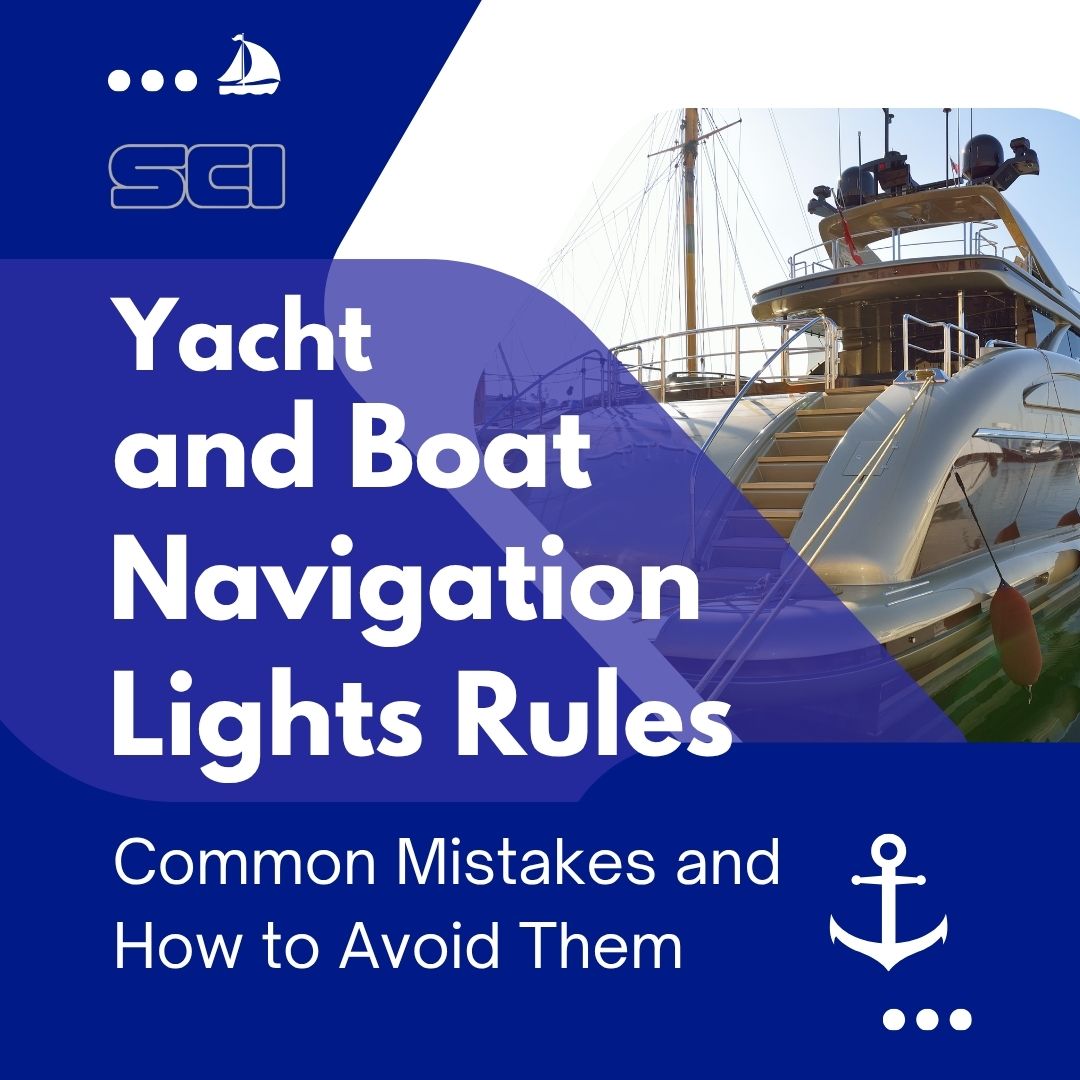
四、Common Mistakes and How to Avoid Them
Even experienced helmsmen can make errors that reduce visibility or mislead other vessels.
Frequent issues:
- Incorrect angles: Lights tilted or misaligned produce wrong sectors.
- Obstructions: Masts, antennas or rigging blocking light beams.
- Color or position errors: Red/green swapped or reversed.
- Poor maintenance: Dirty lenses, corroded contacts, or worn seals reducing output.
Avoidance: Regular checks and sea trials at night. Use versatile, well-calibrated units like the C2-526E and verify color fidelity and sector coverage.
五、Choosing the Right Navigation Lights for Your Yacht
When upgrading, prioritize marine-grade LED navigation lights with strong ingress protection and corrosion resistance.
What to consider:
Materials and Durability
- Materials and Durability: Marine navigation lights must be built to withstand the harsh conditions of the marine environment.
- Waterproof Rating: Choose a waterproof rating of at least IP67 or higher to ensure the light can withstand seawater spray, heavy rain, and even brief immersion. This level of protection helps prevent corrosion and damage caused by the salt and moisture commonly present in marine environments.
- Stainless Steel (e.g., SUS316): Offers excellent corrosion resistance, making it suitable for vessels operating at sea for extended periods.
- UV Protection:The lamp housing should feature UV-resistant materials to prevent discoloration or brittleness caused by prolonged sun exposure.
Certification Standards
- Certification Standards:Choosing certified marine lights ensures product quality and safety.
- USCG Certification: Issued by the United States Coast Guard, confirming that the lighting meets U.S. maritime safety standards. Example: USCG ABYC-C5.
- CE (EN60945) Certification: CE signifies compliance with EU safety regulations. Meeting EN60945 indicates adherence to international maritime EMC standards, helping prevent electronic interference that could compromise navigation safety.
- ABYC A-16: A standard established by the American Boat and Yacht Council (ABYC) covering the design and installation requirements for marine lighting equipment.
Power Supply and Installation
- Power Supply and Installation:The power requirements and installation method of marine lights are also key considerations.
- Voltage: Common marine voltages are 12V or 24V. Ensure the selected light is compatible with the vessel’s electrical system to avoid damage caused by incorrect voltage matching.
- Installation Method: Determine whether the light is recessed, surface-mounted, or retractable. During installation, all wiring must be properly insulated and moisture-protected to ensure reliability and safety.
Light Source Type
Light Source Type:The choice of light source affects energy consumption, lifespan, and overall reliability.
- LED Lights:
- Advantages: Long lifespan (tens of thousands of hours), low power consumption, vibration-resistant, high brightness, and compact size.
- Disadvantages: Higher initial cost.
- Best For: All types of vessels, especially modern boats seeking energy efficiency and durability.
- Incandescent/Halogen Lights:
- Advantages: Low cost and easy to obtain.
- Disadvantages: Short lifespan, high energy consumption, sensitive to vibration, and lower reliability in harsh environments.
- Best For: Older vessels or cost-sensitive applications, though these lights are increasingly being replaced by LEDs.
Upgrading to modern yacht navigation lights can significantly improve safety, visibility, and efficiency. SCI’s LED navigation light series—such as the C2-502, C2-520, C2-526, and C2-527—are excellent choices, designed to meet the lighting standards commonly used in the U.S., Europe, Australia, and other major markets.
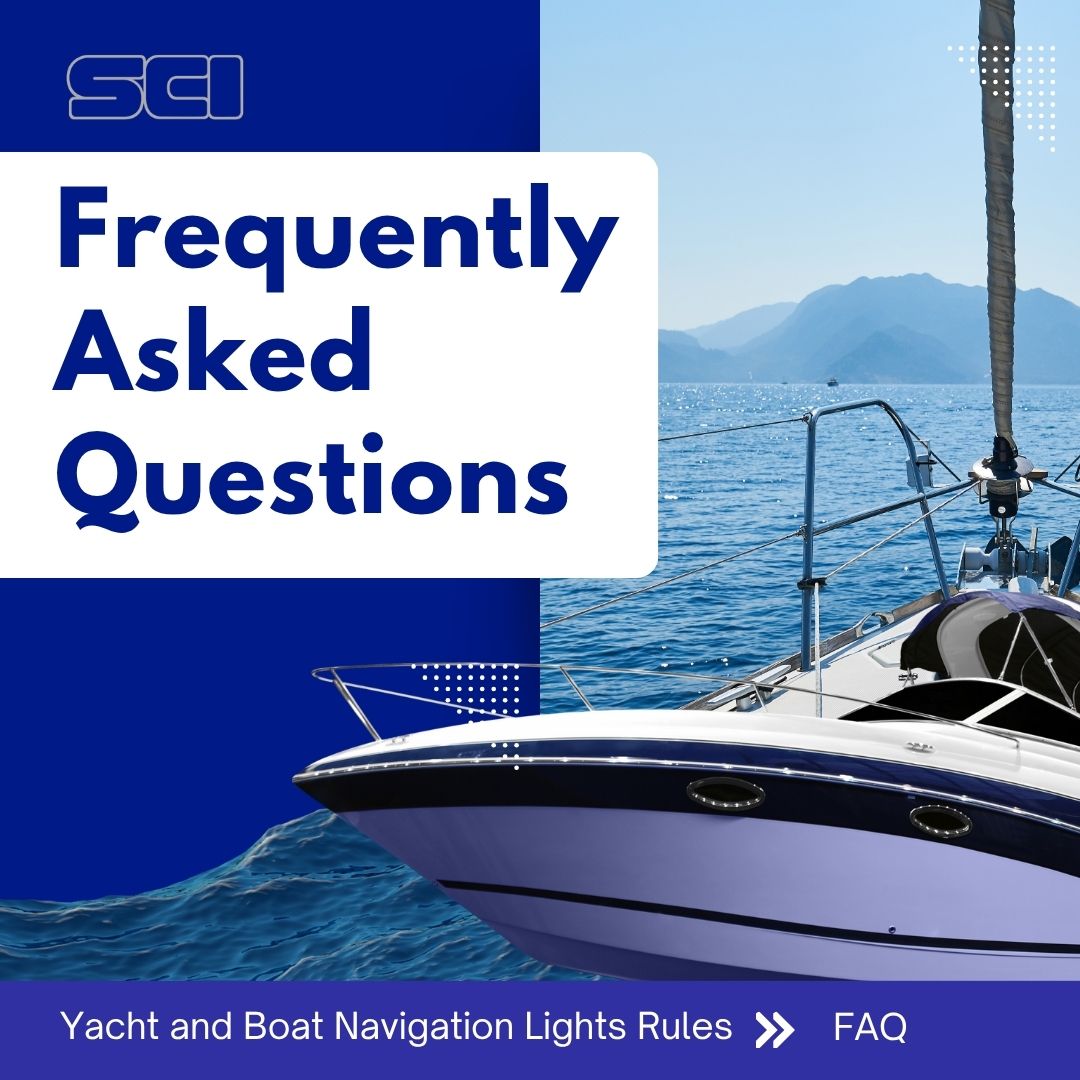
六、Frequently Asked Questions (FAQ)
Q1: Do small boats under 12 meters need navigation lights?
A1: Yes. Even small vessels must display lights visible for the required distances—typically at least 1 NM for side lights and 2 NM for mast/all-round lights.
Q2: How often should navigation lights be checked?
A2: Check all navigation lights before every night-time voyage.
Q3: Can I use ordinary LED fixtures instead of marine-certified LEDs?
A3: No. Marine-certified LEDs are built to withstand saltwater, vibration, and to provide the correct visible sectors and photometric performance required for navigation.
Q4: What are signs of incorrect light installation?
A4: Uneven brightness, loss of visibility at certain angles, or overlapping beams—all indicate misalignment and should be corrected immediately.
Further Reading: IP67 vs IP68: Waterproof Rating Comparison and Selection
Further Reading: Port and Starboard Lights: A Basic Guide to Navigation Lighting

